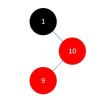弹性布局实现单列布局
1. 前言
弹性布局已经成为移动端最流行的布局方式之一了,还不了解的同学赶快去了解一下吧!本节我们就以弹性布局的方式实现单列布局。
2. 实例代码
<!DOCTYPE html>
<html lang="en">
<head>
<meta charset="UTF-8">
<meta name="viewport" content="width=device-width, initial-scale=1.0">
<title>Document</title>
<style>
/* 清除默认样式 */
* { padding: 0; margin: 0; }
/* 令html和body全屏显示, 并有一个灰色背景 */
html, body { height: 100%; background: gray; }
/* 找到单列盒子的直接父元素 */
body {
/* 令其变成弹性布局 */
display: flex;
/* 水平方向居中 */
justify-content: center;
}
.center {
/* 相当于flex版的width: 90% */
flex-basis: 90%;
/* 白色背景 */
background: white;
}
</style>
</head>
<body>
<div class="center"></div>
</body>
</html>
运行结果:

3. 小结
如果对弹性盒子不太了解的直接记住这几个要点即可:
- 父元素设置 display: flex;
- 水平方向属性为 justify-content;
- 垂直方向属性为 align-items;
下一小节我们来讲一下绝对定位 + 平移来实现单列布局。

































































 手撕红黑树 ·
手撕红黑树 ·
 2025 imooc.com All Rights Reserved |
2025 imooc.com All Rights Reserved |